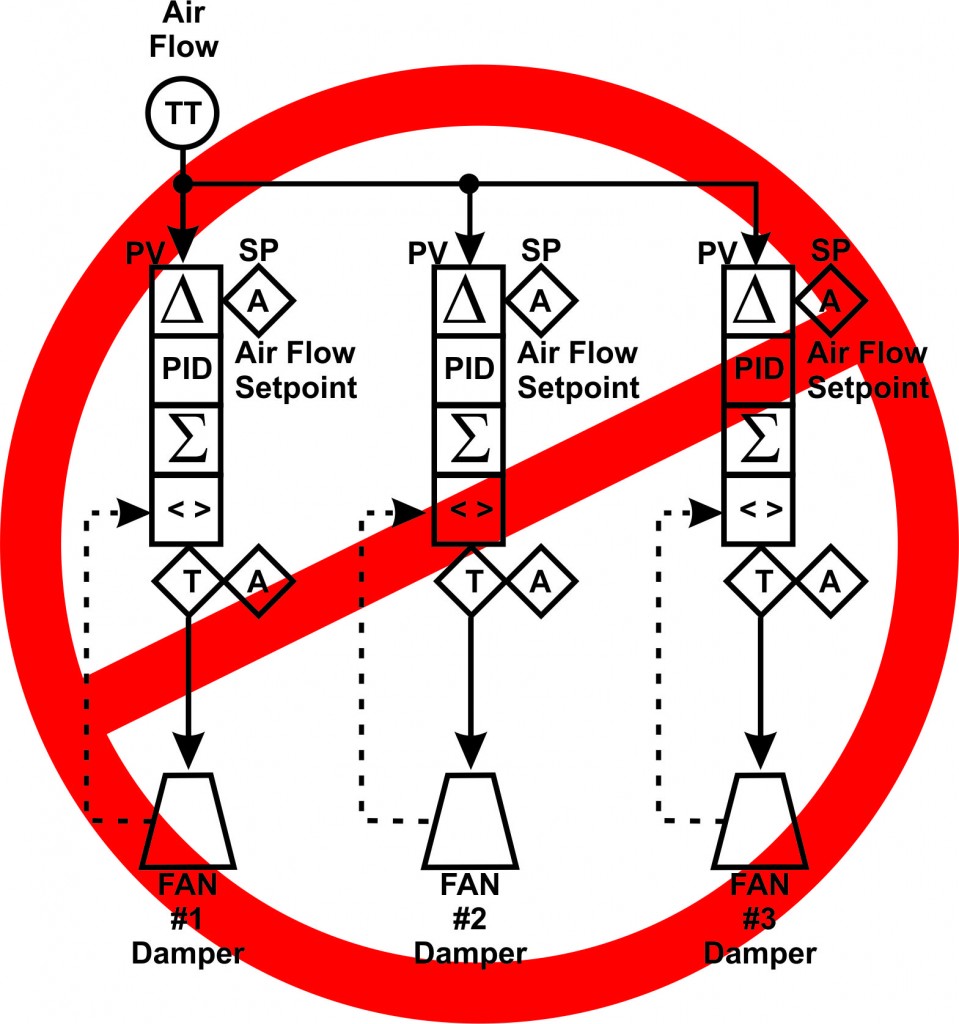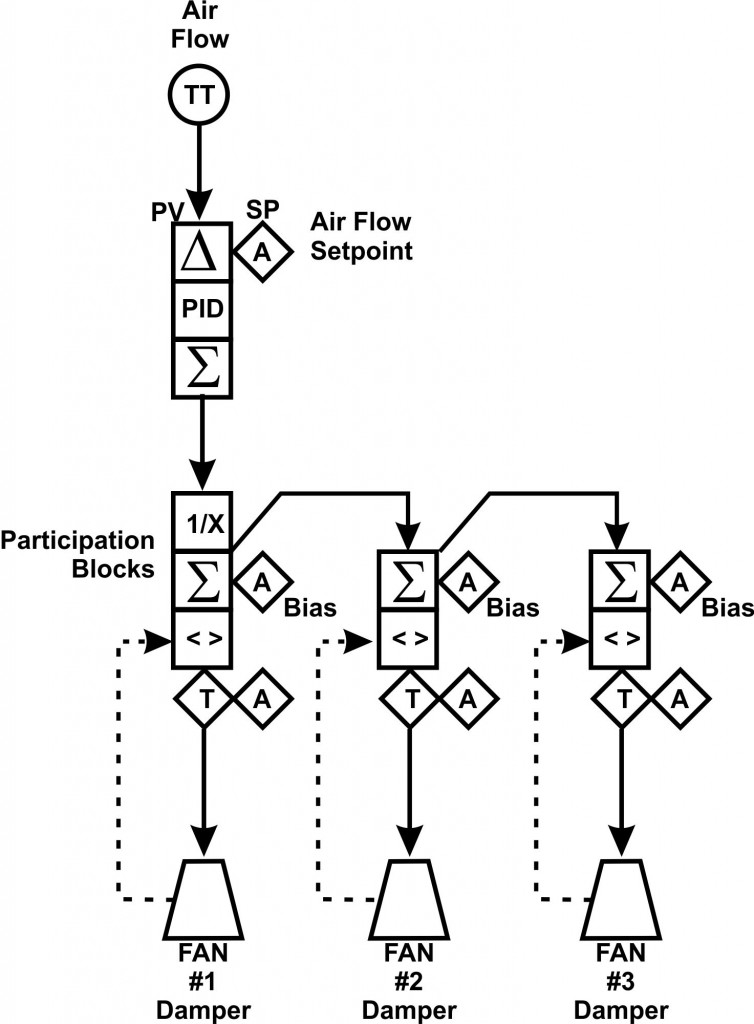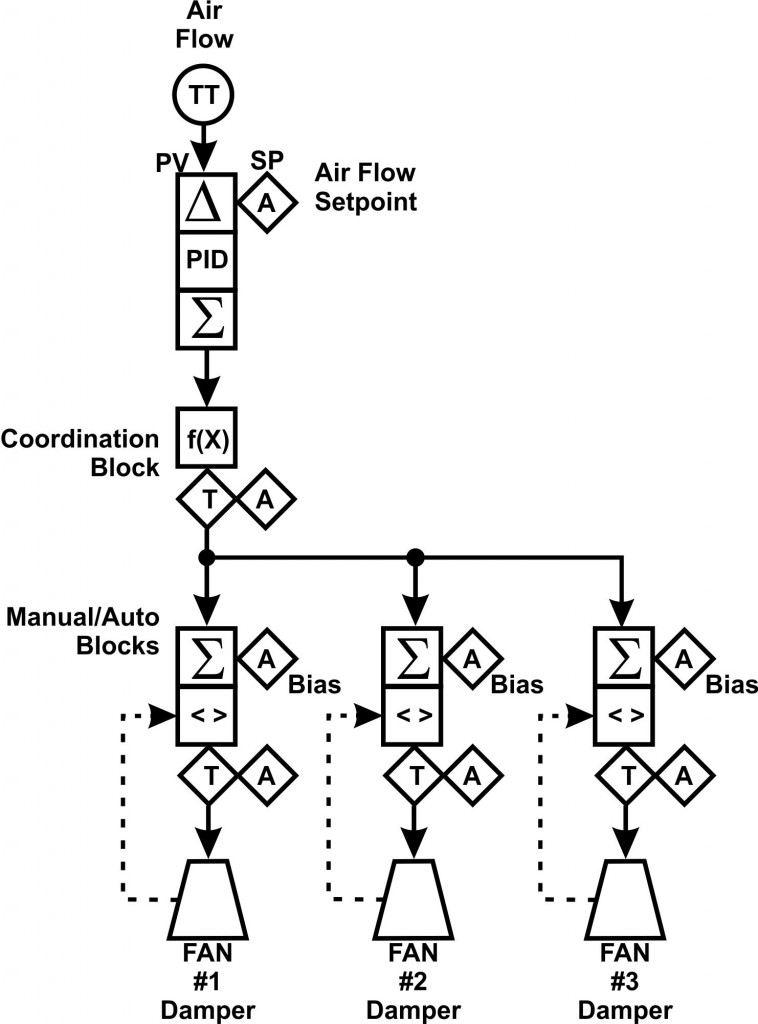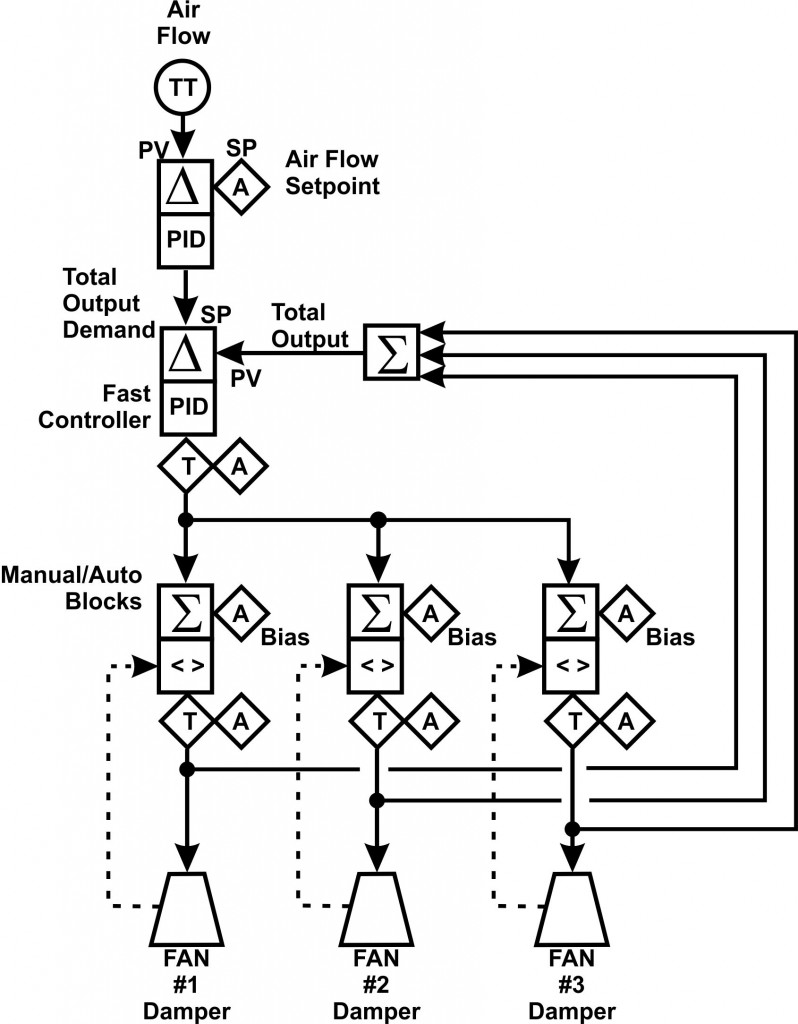There are times in larger processes when many like-type devices must be used in parallel to achieve the desired through-put to adequately supply the process. Either the applicable equipment technology has not evolved to provide the through-put or the equipment has reached its technological limits and cannot be manufactured or increased in size without decreasing the expected life or safety of the equipment or significantly increasing the cost of the device. This equipment can include devices such as valves, fans, pumps, coal pulverizers, burners etc.
It should be noted that all of these end elements are controlling one process variable. As a fundamental control rule, only one control loop should be controlling a single process variable. The example below is an obvious single process variable. Occasionally there may appear to be two individual process variables, but they may be “lock-stepped” variables and really be a single process variable.
Multiple controllers should not be independently controlling one process variable – inevitably these controllers will “fight” each other. The use of participating control arrangements allow multiple devices or end elements to coordinate their control of a single process parameter.
Coordination of these devices is important. The control algorithms must know how many of these devices are in service that are able to respond to the change in a load request. Since these elements are driven in parallel, adding an additional device will effectively increase the process gain. The system must know how many of these devices are participating and properly accommodate the controller gain to account for these additional devices. Other issues occur when one or more of the participating elements reach a limit where it is unable to respond. The controller or supporting algorithm must know and adjust the associated gain to accommodate the number of available devices in service able to respond.
The basic functions that need to be supported by any participation arrangement are:
1. Adjust the outputs of all available active elements to maintain the proper process flow independent of how many output elements are able to respond.
2. Readjust outputs of active elements when one output is added to service or removed from service to maintain desired output and maintain process gain.
3. Identify when one of the output elements is in manual and compensate for the manually set flow through that device and adjust gain for those output elements able to respond. Also maintain overall process gain.
4. Allow individual biasing of output elements and properly accommodate the demand to account for all of the applied biases.
Not all DCS or PLC manufacturers provide the unique block ware to accommodate this multiple element participation. It is up to the engineer or technician to create an arrangement using the available block ware to duplicate these requirements. The arrangement shown above is implemented using a dedicated Participation Algorithm (Metso Automation).
Other manufacturers have different approaches. Emerson Ovation systems utilize a combination of elements that perform a similar Participation function.
The arrangement that Emerson Ovation utilizes consists of a “Balancer” block associated with Manual/Auto blocks. This arrangement provides coordination all of the participation requirements listed above.
When preset blocks are not provided by the control manufacturer, the control technician or engineer must configure a participation arrangement from the Controllers available blocks.
In this configured arrangement the main controller (outer loop) establishes a total demand. In this case since there are 3 fans with 0-100% damper positions, the total demand could run from 0 to 300 position units. This demand is compared to the sum of the actual position of the dampers. Another controller (inner loop) is tuned to quickly respond to any demand-position error. This arrangement will meet all of the participation requirements noted above. This last arrangement is typical of most of the control suppliers since they do not have dedicated participation blocks configured as a standard block.
Note that all of the signal flow diagrams noted above are simplified and do not reflect permissives, overrides or limits. These details would need to be to be completed in any real control arrangement.
In the next series of submittals, I will discuss how a project expands scope and evolves into a more complex arrangement – Hot water project.




